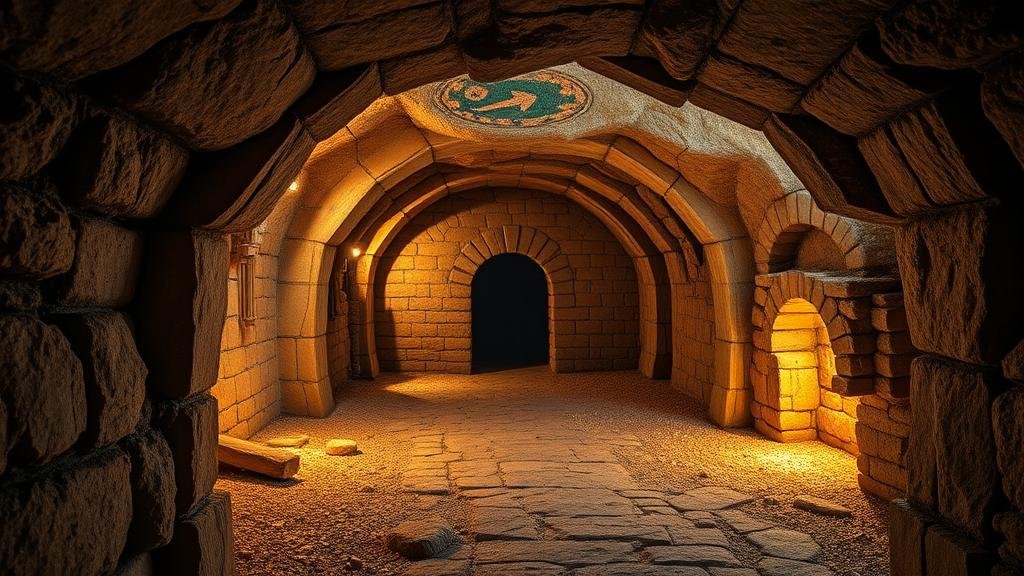Seeking the truth behind tales of subterranean vaults of unimaginable riches.
Seeking the Truth Behind Tales of Subterranean Vaults of Unimaginable Riches
The allure of hidden treasures buried deep beneath the earth has captivated human imagination for centuries. From ancient legends to modern-day claims, tales of subterranean vaults filled with gold, jewels, and artifacts spark curiosity and adventure. This article explores the origins of these stories, examines existing evidence, and seeks to uncover the truth lurking beneath the surface.
The Origin of Treasure Legends
Tales of treasure hidden in underground vaults often originate from significant historical events or cultural myths. For example, the legend of the “Lost Treasure of the Confederacy” arose during the American Civil War. As the Confederacy faced imminent defeat, rumors spread that valuable assets, including gold and silver, were buried in secret locations across the Southern states. Reports suggest that a substantial portion of this treasure remains unfound, with treasure hunters scouring sites across Virginia to Georgia.
High-Profile Examples of Subterranean Vaults
Various locations around the world are renowned for their supposed subterranean riches. Some of these tales are backed by interesting historical details and evidence:
- The Oak Island Mystery: Located in Nova Scotia, the Oak Island mystery revolves around a supposedly cursed island wherein treasure hunters have searched for a longstanding hidden fortune since the late 18th century. Despite numerous excavations and innovations, including the use of sonar technology and drilling, no conclusive treasure discovery has been made, leading to various theories, from pirate loot to artifacts belonging to the Templar Knights.
- The Cahuenga Pass Gold: In 1849, gold supposedly buried at the Cahuenga Pass in California attracted treasure seekers during the Gold Rush. The wealth of this region supposedly comes from several failed mining expeditions. To date, treasure hunters continue to explore the area, driven by the belief that significant gold deposits still lie beneath the landscape.
Connecting Folklore to Historical Context
Many subterranean treasure legends serve not just as entertainment but also as reflections of the socio-political climates of their times. For example, the legend surrounding the Cibola cities, which were said to be filled with gold, was deeply tied to Spanish conquests in the Americas in the 16th century. Spurred by hopes of wealth, explorers like Francisco Coronado embarked on arduous journeys across harsh terrains, often resulting in tragedy.
Academic research has shown that these myths can sometimes lead to historical insights about bygone cultures. For example, the Luba People of Central Africa have tales of hidden vaults filled with their ancestral objects, echoing the legacy and importance of cultural artifacts.
Modern Adventures and Technology’s Role
In recent years, technological advancements have enabled treasure hunters to explore these myths with renewed vigor. Ground-penetrating radar (GPR) and other imaging techniques allow researchers to examine subterranean layers without extensive excavation.
For example, a team at the University of Massachusetts applied GPR at the site of the supposed treasures in Oak Island, concluding that disturbances consistent with past excavation can be detected. Such modern tools can potentially validate or debunk long-standing claims about hidden treasures.
Challenges in Uncovering the Truth
The pursuit of these legendary treasures is fraught with challenges. Many excavators face legal, financial, and ethical considerations. The land on which they search may belong to private entities or indigenous territories, necessitating permission and adherence to regulations. Plus, the validity of historical claims often comes under scrutiny, leading to potential disputes over ownership and rights.
Also, these hunts can oftentimes lead to hoaxes or misinformation. Without concrete evidence, many aspirations of locating these treasures may result in disappointment. A statistic from a treasure hunting survey noted that approximately 30% of treasure hunters have reported finding nothing at all in their pursuits.
What Lies Ahead: Prospects for Treasure Hunters
While some treasure legends may remain unverified, the search continues to inspire modern adventurers and researchers alike. The excitement of seeking undiscovered wealth remains a compelling motivator, combining elements of history, culture, and thrill-seeking.
To increase the likelihood of finding legitimate treasures, aspiring treasure hunters should consider:
- Conducting thorough historical research before embarking on a quest.
- Utilizing technology such as GPR to enhance their exploration efforts.
- Collaborating with archaeologists to ensure ethical navigations of the sites.
Conclusion: The Enigma of Below
The tales of subterranean vaults filled with unimaginable riches are woven into the fabric of human history. While many stories remain relegated to myth, some are rooted in facts that tantalize adventurers. The truth may be elusive, but the quest for understanding continues to resonate across generations. Whether as a hobby or a serious venture, the searches remind us of the mystery and allure of our world – both above and below the ground.



